Teotihuacan - The First Master Planned City in Mesoamerica
![]()
The people of the great civilizations of Mesoamerica left their splendid cities, marvelous works of art, stunning jewelry, everyday household stuff, and informative books for us to admire, ponder and study. Mexico City's wonderful Museo National de Antropologia, offered us a vast collection of the most spectacular objects along with reconstructions of the architecture and clear accounts of the religious beliefs, political systems and the daily life of the inhabitants of each of these rich cultures. We spent two days exploring the halls, seeking to understand each one.
Our visits to the Museo prepared us for our explorations of Mexico's archaeological sites, beginning with Teotihuacan, just 40 kilometers northeast of Ciudad de Mexico. To visit, we traveled by Metrobus to the Terminal de Autobuses del Norte, and from there rode a bus traveling past the far northeast edge of the vast city, serenaded by a fellow passenger playing his guitar and singing sad ballads.
To provide a bit of history, the rise of Teotihuacan began with a gathering of farmers around 600 BC. By 200 BC this settlement was evolving into a major population center and around 1 AD, a Master Plan was created and the construction of the great Pyramids of the Sun and Moon began along the wide Calzada de los Muertos (Avenue of the Dead). During this time, a theocratic city state developed with more residential construction and a flowering of science and artistic expression. Between 150 and 450 AD, the city was home to 200,000 people, perhaps the largest city in the world at that time! The city had systems for utilizing ground water, harvesting rainwater, and drains. There were paved streets connecting designated areas for artisans' workshops, residential colonias, markets, temples and palaces as well as the grand ceremonial center.
The religious life of this great city occupied the inhabitants as they sought assistance from the gods: Tloloc, the god of rain; Chalchiutlicue, the goddess of water; and Quetzalcoatl, the feathered serpent. These gods were represented in sculptures, clay figurines and mural paintings.
Arriving at the main gate to the site, we walked past the usual shops offering folk art items and cold drinks, and entered the wide Calzada de los Muertos (Avenue of the Dead). Ahead was the expansive gray stone stairway of the Ciudadella.
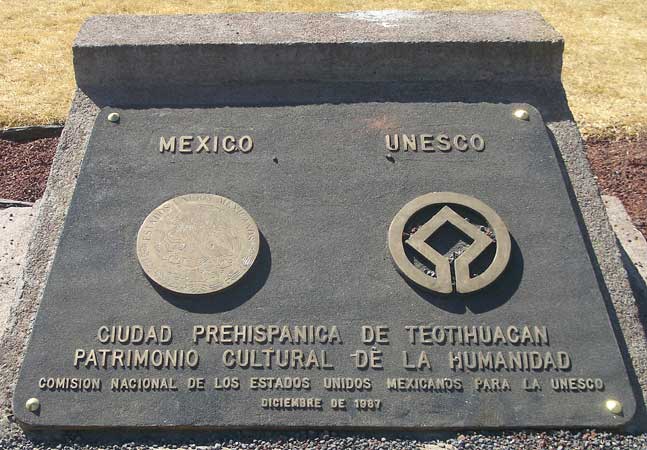
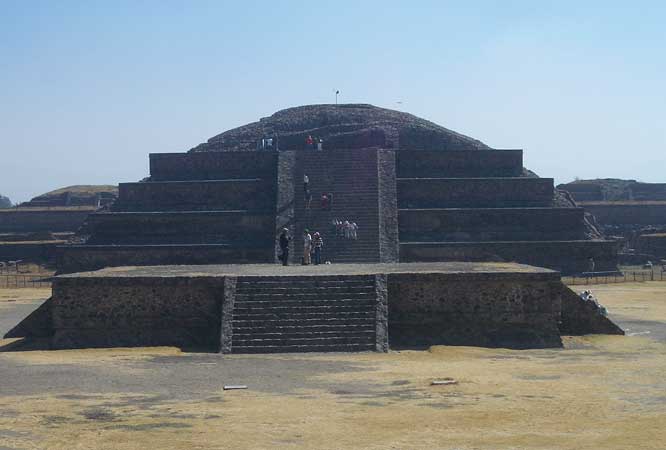
We climbed the steep stairway of the Ciudadella and from the top of the wall, we realized that we stood on one side of a quadrangle surrounding a great plaza with the Templo de Quetzalcoatl toward the rear. We wandered around the plaza feeling the presence of the spirits of those people who had worshipped here long ago.
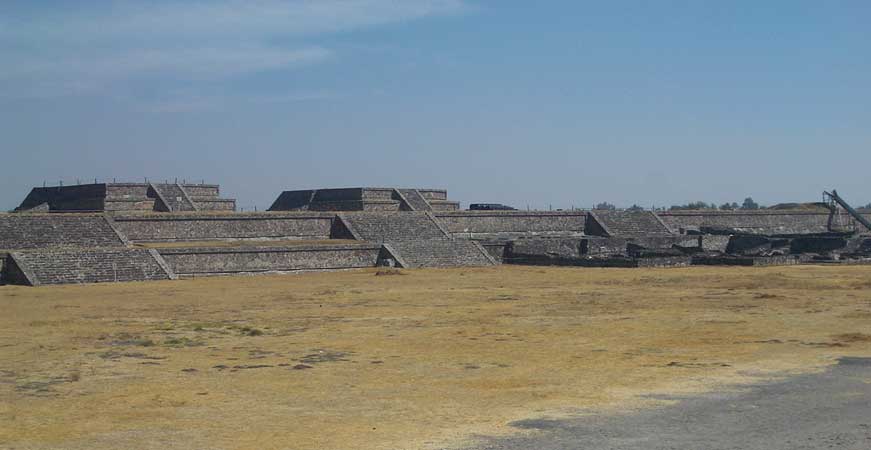
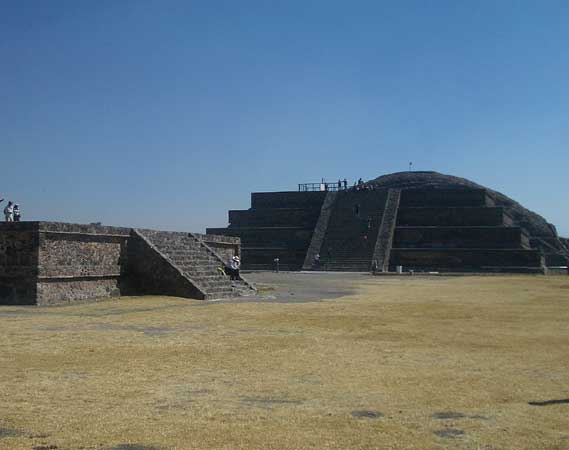
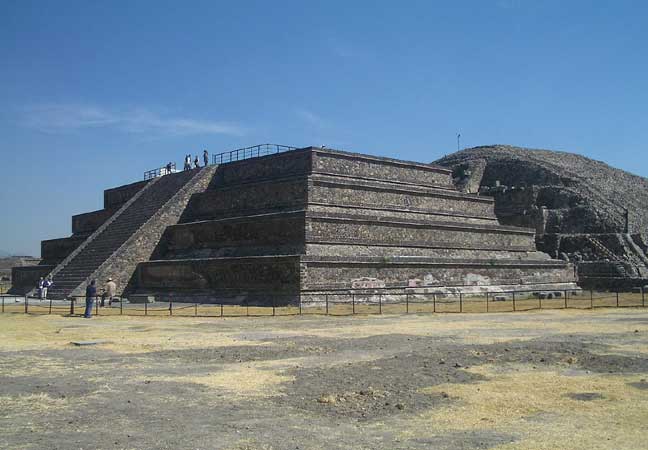
The facade of the Templo contained striking sculptures of the god himself alternating with Tlaloc and the cipactli (crocodile) symbolizing the fusion of earth and water or fertile land. We had seen a reconstruction of this in the Museo increasing our appreciation of the "real thing" before us.
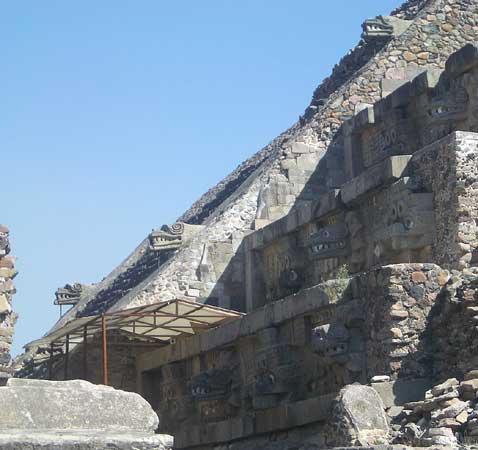
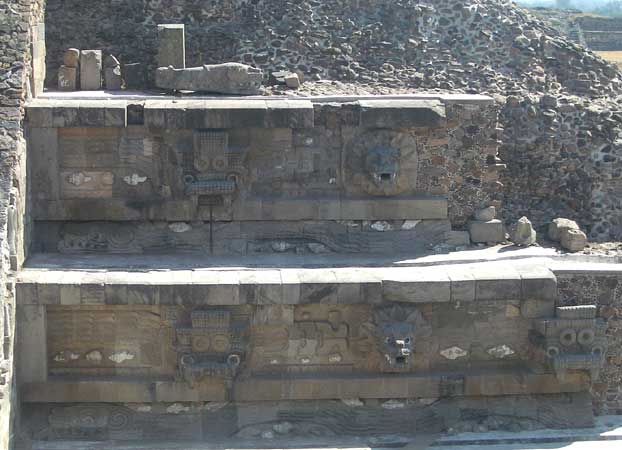
Our stroll into the Ciudadella entailed ascending and descending steep stairways of crooked stone steps so by the time we had returned to the Calzada de los Muertos to walk toward the Pyramids of the Sun and Moon, our leg muscles were already feeling the strain even though we're in pretty good shape!
But we persisted, walking across the bridge over the Rio San Juan, the primary water source for the city, and on toward the Pyramid of the Sun, looming ahead.
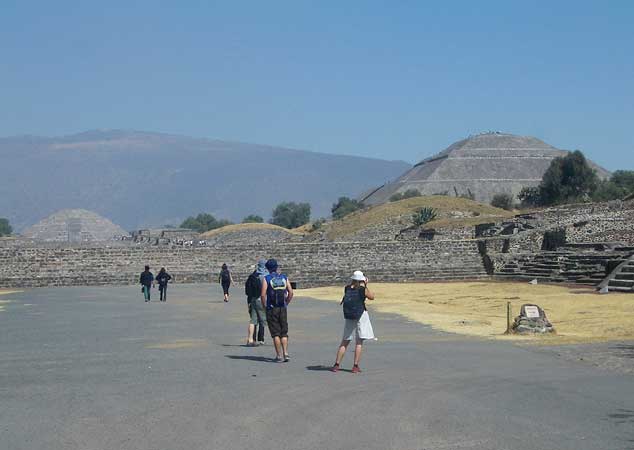
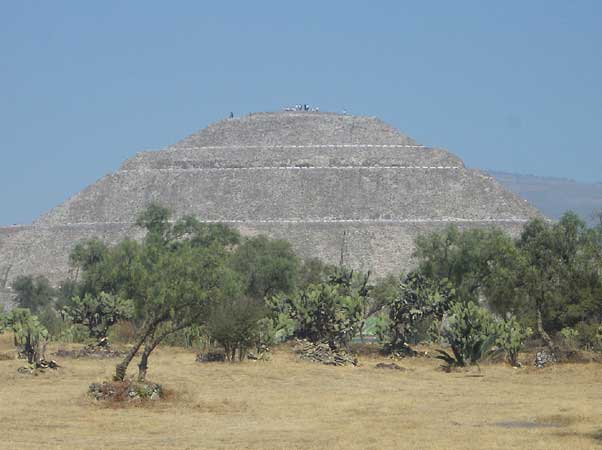
This monumental building is 220 meters on a side and 60 meters high, a mountain built by men! The elegant covering includes grand staircases and carefully placed rocks. We walked around it marveling at the architecture and attempting to comprehend the labor that its construction had required.
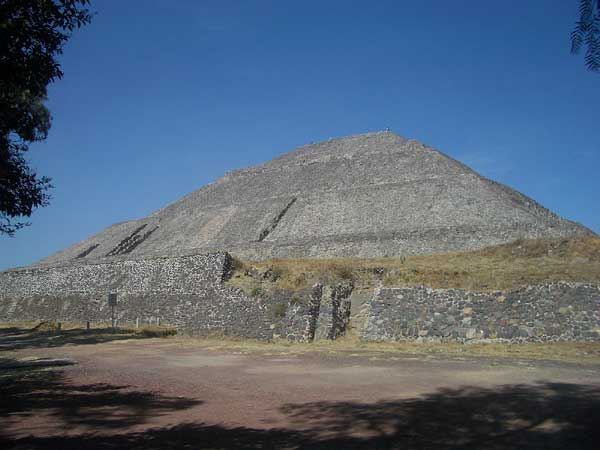
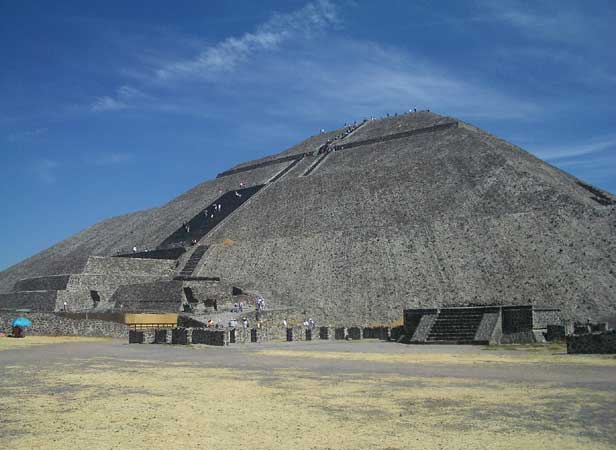
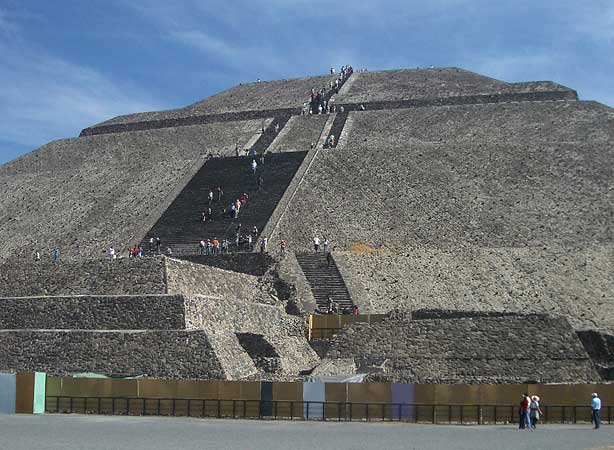
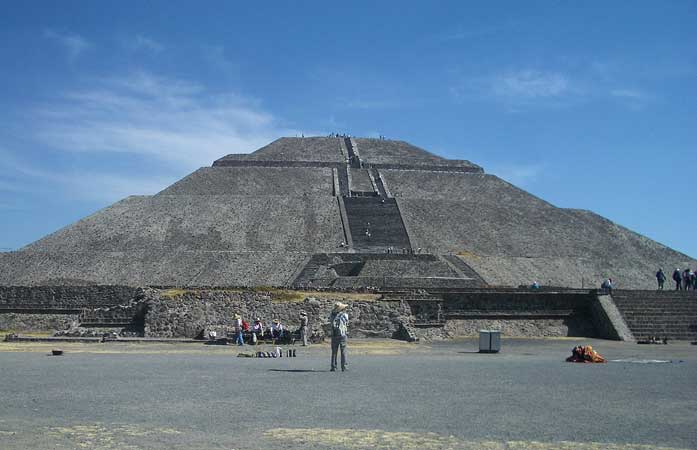
Continuing along the Calzada, a wall with a mural of a puma surrounded by water motifs highlighted the artistic creativity of the Teotihuacanos.
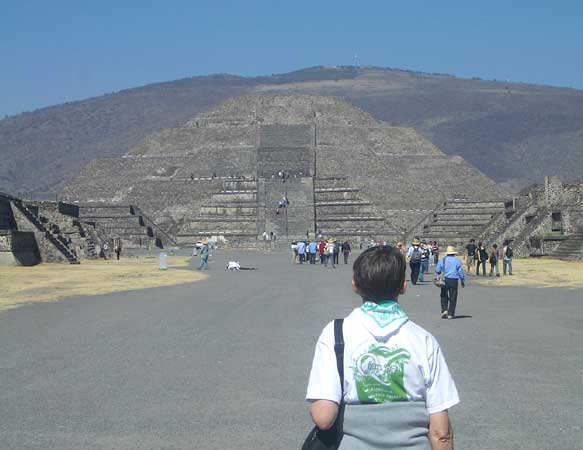
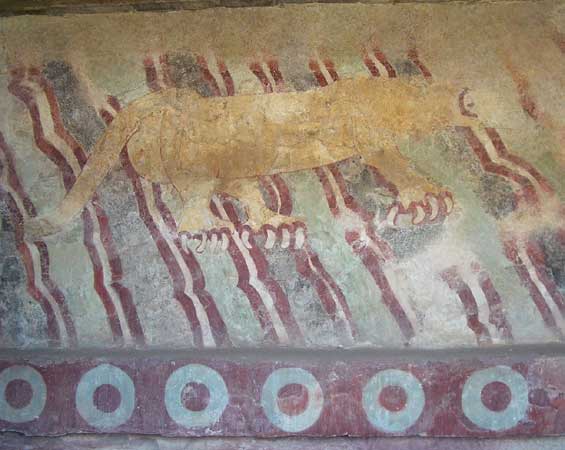
Just before the great plaza in front of the Pyramid of the Moon, we scouted a complex of palaces to discover intimate porticoed court of the Quetzal-papalotl Palace, the columns were decorated with relief carvings of this strange bird figure with bright obsidian eyes that seemed to be watching us.
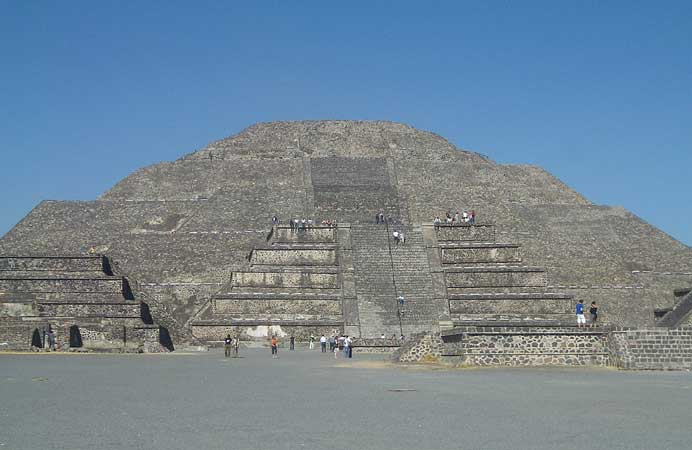
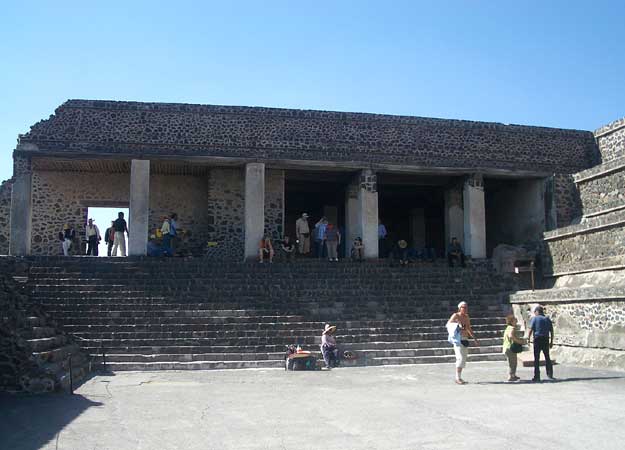
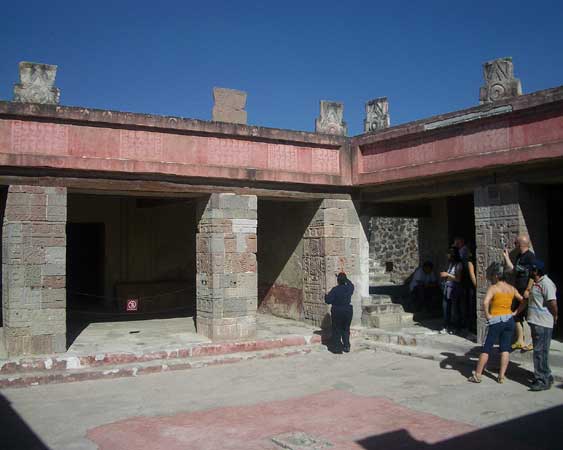
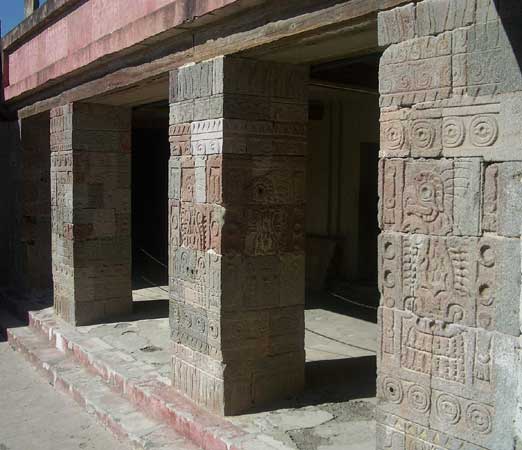
We continued through passageways to the Temple of Jaguars, a plaza with a small pyramidal platform surrounded by porticoes. The pyramid's stairway had featured side ramps in the shape of rattlesnakes, the heads at the foot of the stairway. Inside one of the rooms, the walls were decorated with murals of cats blowing conch shells. We could almost hear the song!
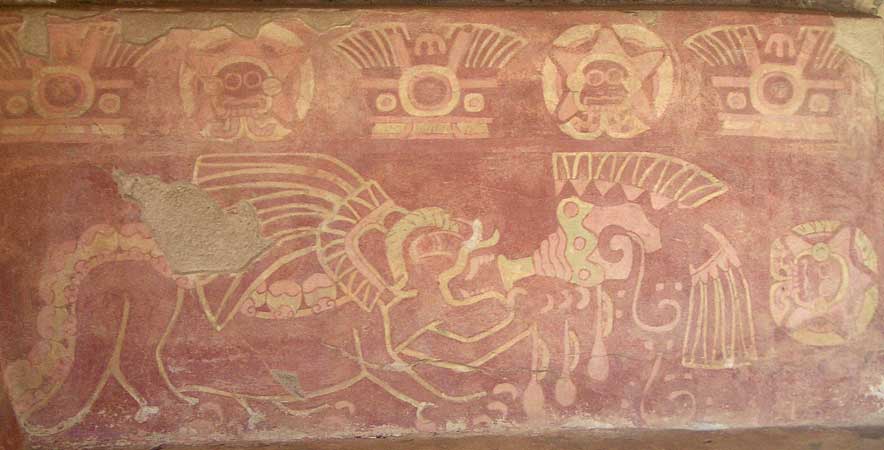
Climbing to the top of one of the temples, we gazed at the great Pyramid of the Moon with awe and amazement. Smaller than the Pyramid of the Sun, this majestic building stood, framed by the mountains behind it. Great staircases climbed to the platform at the top where a temple once stood. Here ceremonies to honor Chalchiutlicue, the goddess of water, were performed for the masses of worshippers gathered on the plaza. Looking back along the Calzada, lined with templos to the Pyramid of the Sun, we imagined this grand thoroughfare filled with people arriving for the ceremonies.
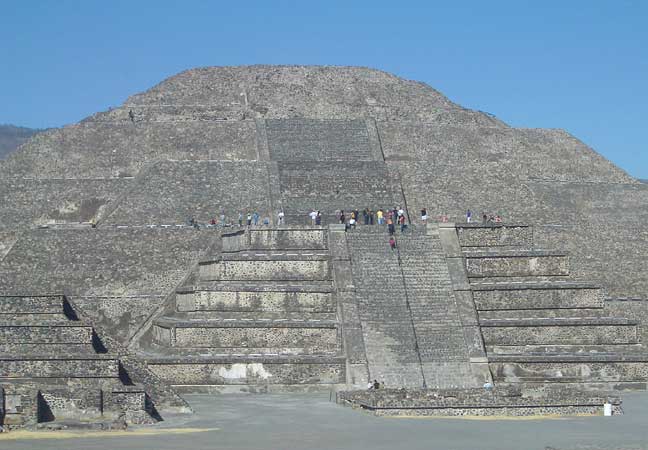
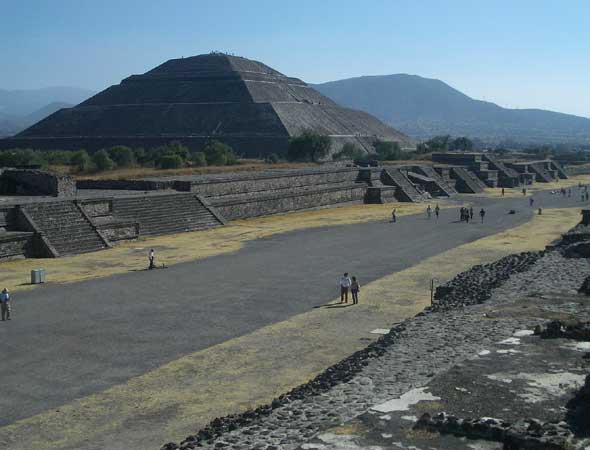
But, this great city did not last; by 700 AD it was abandoned for reasons still unknown. Theories suggest that a famine caused by droughts or a power struggle or an invasion might have occurred. Perhaps it was a combination of these factors.
Long after it fell, the city was discovered by the nomadic Mexica people, the Aztecs, who were awestruck by its splendor. They concluded that this must have been the birthplace of gods and it became a pilgrimage site for visitors who performed ceremonies to honor these gods.
With these reflections in our heads, we walked out the gate to catch a bus back to the city and our apartment. Our appreciation and admiration for the Teotihuacanos, whoever they were, had expanded as we had deepened our understanding of the accomplishments of these creative people who lived so long ago.
Click here to return to our Moving on to Mexico - Winter 2008-2009 page
![]()